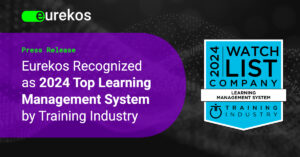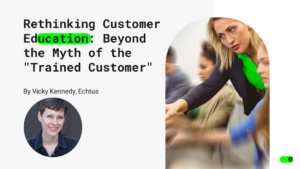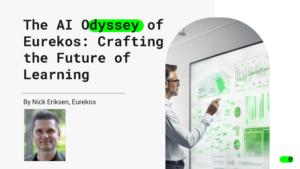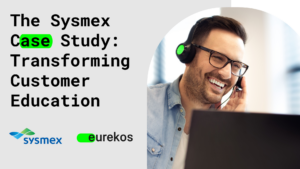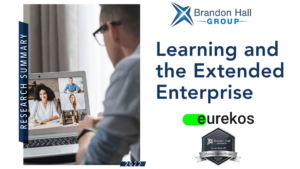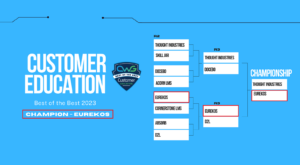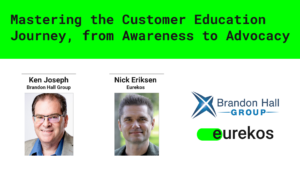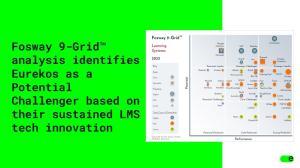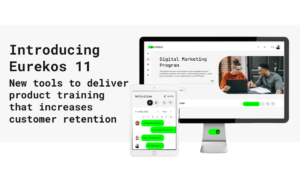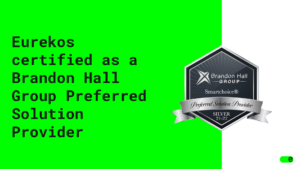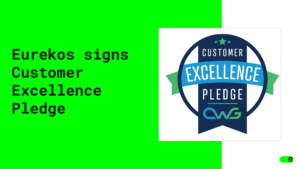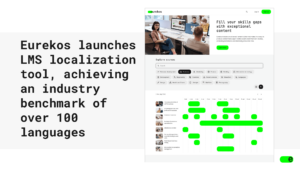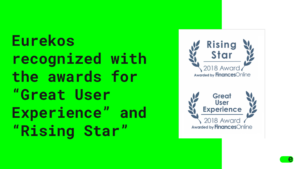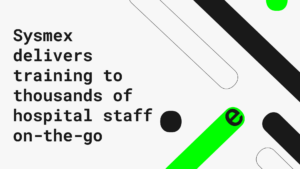By Anders Willumsen, Eurekos Systems.
Emphasize these 5 points when reviewing and changing your learning technology
If you are looking to review and change your approach to your learning technology there are a number of points you need to think about. Working through these will help you to review your current infrastructure and select a new technology that will truly meet your needs now and in the future. Written in partnership with The Learning Effect.
1) Don’t start with the technology
Many people start by thinking they need a new piece of learning technology. Whilst this might seem logical, thinking about the technology first is an easy way to rush to decisions which won’t deliver the results you need.
Whilst technology is important, it sits as part of your wider approach to learning, development, communications and performance. So, start by reviewing where you are and where you want to be. Think about your business, its objective and the part that learning plays within this.
2) Take a holistic approach to change
Clarifying this will help you to see what you need to change or enhance to achieve your desired outcomes. Experience shows that you cannot just change your technology without considering the changes required to associated processes, skills of the team and learning and content development strategies.
Where learning technology implementations fail a key factor is often that the project is operating in a silo and not central to the learning strategy of the business.
Not bringing team members along on the journey will make it hard when you try to implement solutions, leading to a greater likelihood of resistance.
3) Involve your stakeholders, don’t just consult them
As well as having buy-in from your immediate team, it is critical that you engage and involve your stakeholders early on. We have seen numerous projects where stakeholders who have not been involved in a project sufficiently derail or delay a project later on.
The first step is to work out who your stakeholders are. Stakeholders tend to fall into four categories.
- Your customers – internal or external
- Your team/partner functions
- Budget holders
- Gatekeepers
Thinking about how you approach these stakeholders is key as they will already be busy with other work and getting involved in your project is not likely to be their number one priority. We have included a few tips below.
Your customers
Ensure that your customers understand what you are trying to achieve and the benefits to them. Take time to truly understand what they need and would like and the benefits to them of taking the time to support the change. Changing learning tech purely to make the learning teams life easier seldom has a lasting impact.
Your team/partner functions
Working with your team, customer and partners functions to create a joint vision of what you are trying to achieve will enhance your impact. In many businesses the lines between learning systems and other systems can be muddy, blurred and may overlap. Typical functions to consider are HR, Communications and IT. Think about how your learning system will work with HR systems and processes, how will it sit alongside your employee engagement and internal communications strategies. What relationship with it have with your intranet and/or website?
Budget holders
Building a compelling business case is vital to getting your new project supported. However, you also need to think of all the other associated costs surrounding the project. Many learning tech implementations are treated just as a one off project and as soon as the system is in resource, focus and money moves to the next project. Bringing stakeholders such as those who hold budget on the journey and ensuring they are invested for the long haul will significantly increase your chances of success.
Gatekeepers
Every business will have functions which are there to ensure new purchases are made for the greater good of the business. By engaging these functions early, you can hopefully move these functions from being gatekeepers to being partners. Such functions include finance, procurement and IT.
3) Identifying the outcomes your learning tech needs to enable
Engaging with a wide set of stakeholders will help you to have a deep and rounded view of what you are and are not trying to achieve. Consider the process is like buying a house, by focusing on what is most important to you and your business you can make sure you find technology that is right for you. Focusing on outcomes, not features, will allow you to truly understand what you need your learning tech to do.
4) Selecting the right options
This is where you might need support from an external source. The Learning Effect specialise in helping you through the right selection process for your organisation; this could be an RFP (formal procurement process) or other. During this process they will help to showcase options and highlight strengths and challenges of each. They can also help to ensure that there is no-misunderstanding of expectations between you and vendors. And finally, support you to make an informed choice which is right for you.
You might question why you need support at this stage. Many buyers find the market confusing. Here are a few reasons why:
- There are thousands of suppliers out there who on face value all do similar things
- There is lots of jargon used and different suppliers will use the same phrase but mean different things
- The market changes quickly
- You probably only buy learning technology every 3 to 5 years so this may not be your area of expertise
- It is very time consuming to see lots of suppliers and it might leave you more confused
- Demos are designed to show the best of a product, will you be able to spot the potential challenges?
You should be looking for a learning technology supplier who will become a partner and work with you, be wary of suppliers who skip over your questions or who focus on showing their most exciting features. A feature might be exciting but what value will it add to your business and will it work in practice?
5) Ensure you get the best deal
The best relationships with learning tech vendors are focused on partnerships. Having a trusted partnership with your vendor brings many benefits such as:
- having honest discussions about customisable options for your organisation’s needs
- Understanding the ethos of the provider and whether it aligns with yours
- onboarding that fits the structure and needs of your organisation
- ensuring you only pay for what you need
- plus many more…
Eurekos’ vision is to be a partner, not a vendor to their customers and this can be seen right from the initial ‘fact-finding’ conversations through to the ongoing customer support.
Summary
Purchasing new learning technology for your business can be a key enabler in delivering the results you need. Such a change is a significant project for any learning team and investing energy and effort in the project will significantly increase the chances of you delivering the results you need whilst reducing wasting time, effort, energy and budget.
Who are The Learning Effect
The Learning Effect exists to help businesses enhance their performance through their approach to learning. Our wealth of in-house experience combined with our knowledge of the learning tech market and results driven approach make us your go to partner if you are looking to review and change your approach to learning or your learning technology.




